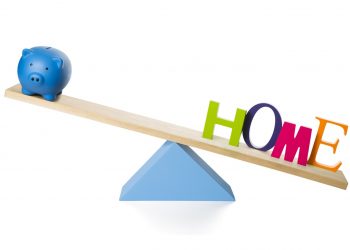RISMEDIA, July 27, 2009-Part 3 of this series provided a general background on MLS 5.0. This month’s article takes the reader deeper into what MLS 5.0 actually is.
MLS 5.0 is:
-The authoritative and trusted source for all things related to real estate. This begins with the accurate inventory of currently available property for sale and the best “sold” data available anywhere. This information is like flypaper when it comes to attracting consumers to a website; and all real estate Web portals are looking for the most cost-effective way to access this data.
-A property wiki-A wiki is a collection of webpages in which the content is written by contributors (wiki in plain English). Wiki software can have many uses and applications, the most well-known being Wikipedia, which is an encyclopedia written by volunteer writers and editors. Companies today often use wiki software to create searchable, retrievable information about the company. A wiki begins with something referred to as a “stub,” which can be a word or a phrase which contributors then write about. A property wiki, then, is a wiki where the stubs are property addresses or parcel numbers, to which information from contributors and editors can be added to create a comprehensive record. Imagine a blank website for every property address in the U.S. Imagine adding anything publicly known to that blank website. Now imagine inviting the property owner and Realtors to add what they know about the property. While there are some concerns about accuracy, Web 2.0 concepts, self-policing, flagging and social capital will, in time, minimize the inaccuracies.
-A social networking site-Realtors meeting Realtors/Realtors meeting consumers/consumers meeting consumers. All engaging in an ongoing “conversation” about real estate-from the casual buyer to the real estate enthusiast.
-Built understanding generational differences, serving the Realtor of today and the Realtor of the future, to better serve the consumer of today and the consumer of the future. Real estate is an infrequent event in the lives of most people, so changes take longer than might otherwise be expected. This point is often missed by those advocating change or those working to build business models in the real estate industry. Gaining momentum and enthusiasm for change is hard work under normal circumstances and even more difficult in the real estate industry.
-A public-facing as well as a “business-to-business” enterprise-Public-facing components present a political challenge in the industry, but if one believes that “distribution trumps destination,” MLS public-facing sites can add value.
-A source of neighborhood information contributed by neighbors.
-The “single point of entry” for data distribution (syndication of listing data), as a choice for brokers and agents-distribution trumps destination.
-Multilingual where and when appropriate
-A place for Realtors to “prospect” for buyers and sellers.
-Designed with single sign-on (SSO) to other Web destinations in mind
-Open, yet secure information available without artificial geographic boundaries; ensuring that the data is accessible to the widest audience possible while obeying regulatory restrictions
-A center for transaction management applications.
-An ecosystem of innovation (think iPhone…”there’s an app for that”), open to and encouraging innovation, allowing for various front-end software to be created and used to access the data. Members of the MLS could choose a Rapattoni front end one day and select a FNIS front end the next. A user might find that one front end is good for some things and one is good for others, and use the appropriate tool to get the job done. Openness should allow for more applications, solutions and lower prices for Realtors.
What’s your opinion? Please write to thefutureofmls@point2.com.
Saul Klein is CEO of InternetCrusade and Point2 Technologies Inc.
For more information, please visit www.point2agent.com.










